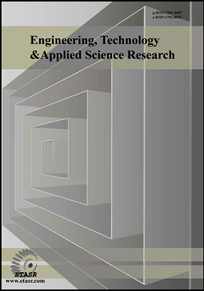A Multi-Language NLP Model for Inclusive Digital Healthcare Marketing and Patient Communication
Received: 2 November 2024 | Revised: 5 December 2024, 16 December 2024, and 23 December 2024 | Accepted: 29 December 2024 | Online: 5 February 2025
Corresponding author: Albia Maqbool
Abstract
Digital healthcare systems integrate Natural Language Processing (NLP) to make advances in the ways patients engage and communicate. However, multilingual access to a wide variety of languages has been an ongoing problem. This study introduces a multilingual NLP model for digital healthcare marketing and patient communication, designed to help patients obtain health information across languages. This work addresses essential multilingual issues in the healthcare context, such as providing a language-adaptive function using state-of-the-art semantic processing. The model introduces linguistic diversity for personalized healthcare marketing to help develop more personal relationships with patients. The model was evaluated across languages to determine whether it provides practical benefits in enabling clear and culturally attuned communication. This model has the potential to help create a linguistically inclusive healthcare environment, helping patients understand their health conditions and treatment options, and increasing overall patient satisfaction.
Keywords:
natural language processing, multi-language model, digital healthcare marketing, patient communication, inclusivity, language adaptation, healthcare managementDownloads
References
X. Huang, J. May, and N. Peng, "What Matters for Neural Cross-Lingual Named Entity Recognition: An Empirical Analysis," in Proceedings of the 2019 Conference on Empirical Methods in Natural Language Processing and the 9th International Joint Conference on Natural Language Processing (EMNLP-IJCNLP), Hong Kong, China, 2019, pp. 6394–6400.
D. Demner-Fushman, W. W. Chapman, and C. J. McDonald, "What can natural language processing do for clinical decision support?," Journal of Biomedical Informatics, vol. 42, no. 5, pp. 760–772, Oct. 2009.
R. M. Rivera-Zavala and P. Martínez, "Analyzing transfer learning impact in biomedical cross-lingual named entity recognition and normalization," BMC Bioinformatics, vol. 22, no. S1, Dec. 2021, Art. no. 601.
Z. Li, C. Hu, X. Guo, J. Chen, W. Qin, and R. Zhang, "An Unsupervised Multiple-Task and Multiple-Teacher Model for Cross-lingual Named Entity Recognition," in Proceedings of the 60th Annual Meeting of the Association for Computational Linguistics (Volume 1: Long Papers), Dublin, Ireland, 2022, pp. 170–179.
Y. Mo et al., "mCL-NER: Cross-Lingual Named Entity Recognition via Multi-view Contrastive Learning." arXiv, Feb. 21, 2024.
X. Fontaine, F. Gaschi, P. Rastin, and Y. Toussaint, "Multilingual Clinical NER: Translation or Cross-lingual Transfer?" arXiv, Jun. 07, 2023.
G. Goel and A. K. Chaturvedi, "Multi-Objective Load-balancing Strategy for Fog-driven Patient-Centric Smart Healthcare System in a Smart City," Engineering, Technology & Applied Science Research, vol. 14, no. 4, pp. 16011–16019, Aug. 2024.
A. M. Alghamdi, M. A. Al-Khasawneh, A. Alarood, and E. Alsolami, "The Role of Machine Learning in Managing and Organizing Healthcare Records," Engineering, Technology & Applied Science Research, vol. 14, no. 2, pp. 13695–13701, Apr. 2024.
Z. A. Nazi and W. Peng, "Large language models in healthcare and medical domain: A review." arXiv, Jul. 08, 2024.
A. E. W. Johnson et al., "MIMIC-III, a freely accessible critical care database," Scientific Data, vol. 3, no. 1, May 2016, Art. no. 160035.
C. P. Carrino et al., "Spanish Biomedical Crawled Corpus: A Large, Diverse Dataset for Spanish Biomedical Language Models." arXiv, Sep. 16, 2021.
L. Hirschman and C. Blaschke, "Evaluation of text mining in biology," Text mining for biology and biomedicine, vol. 213, 2006, Art. no. 245.
"TCM Modernization." https://www.tcmm.net.cn/en/.
A. Névéol, C. Grouin, J. Leixa, S. Rosset, and P. Zweigenbaum, "The Quaero French Medical Corpus: A Ressource for Medical Entity Recognition and Normalization."
K. B. Cohen and L. Hunter, "Getting Started in Text Mining," PLoS Computational Biology, vol. 4, no. 1, 2008, Art. no. e20.
G. K. Savova et al., "Mayo clinical Text Analysis and Knowledge Extraction System (cTAKES): architecture, component evaluation and applications," Journal of the American Medical Informatics Association, vol. 17, no. 5, pp. 507–513, Sep. 2010.
D. Dinh and N. Le Thanh, "English–Vietnamese cross-language paraphrase identification using hybrid feature classes," Journal of Heuristics, vol. 28, no. 2, pp. 193–209, Apr. 2022.
L. J. Jensen, J. Saric, and P. Bork, "Literature mining for the biologist: from information retrieval to biological discovery," Nature Reviews Genetics, vol. 7, no. 2, pp. 119–129, Feb. 2006.
D. E. Messaoudi and D. Nessah, "Enhancing Neural Arabic Machine Translation using Character-Level CNN-BILSTM and Hybrid Attention," Engineering, Technology & Applied Science Research, vol. 14, no. 5, pp. 17029–17034, Oct. 2024.
M. Rayner et al., "The 2008 MedSLT System," in Coling 2008: Proceedings of the workshop on Speech Processing for Safety Critical Translation and Pervasive Applications, 2008, pp. 32–35.
M. Krallinger, A. Valencia, and L. Hirschman, "Linking genes to literature: text mining, information extraction, and retrieval applications for biology," Genome Biology, vol. 9, no. S2, Sep. 2008.
C. Friedman and S. B. Johnson, "Natural Language and Text Processing in Biomedicine," in Biomedical Informatics: Computer Applications in Health Care and Biomedicine, E. H. Shortliffe and J. J. Cimino, Eds. Springer, 2006, pp. 312–343.
Downloads
How to Cite
License
Copyright (c) 2025 Nargis Parveen, Albia Maqbool, Hina Skhawat, Rima Osama Mohammad Othman, Dima Mahmoud Aref Abbadi, Esraa M. Al-Lobani, Shama Mashhour M. Alqahtani, Muhammad Skhawat Ali, Khaled Mejdi, Wassim Zahrouni

This work is licensed under a Creative Commons Attribution 4.0 International License.
Authors who publish with this journal agree to the following terms:
- Authors retain the copyright and grant the journal the right of first publication with the work simultaneously licensed under a Creative Commons Attribution License that allows others to share the work with an acknowledgement of the work's authorship and initial publication in this journal.
- Authors are able to enter into separate, additional contractual arrangements for the non-exclusive distribution of the journal's published version of the work (e.g., post it to an institutional repository or publish it in a book), with an acknowledgement of its initial publication in this journal.
- Authors are permitted and encouraged to post their work online (e.g., in institutional repositories or on their website) after its publication in ETASR with an acknowledgement of its initial publication in this journal.





